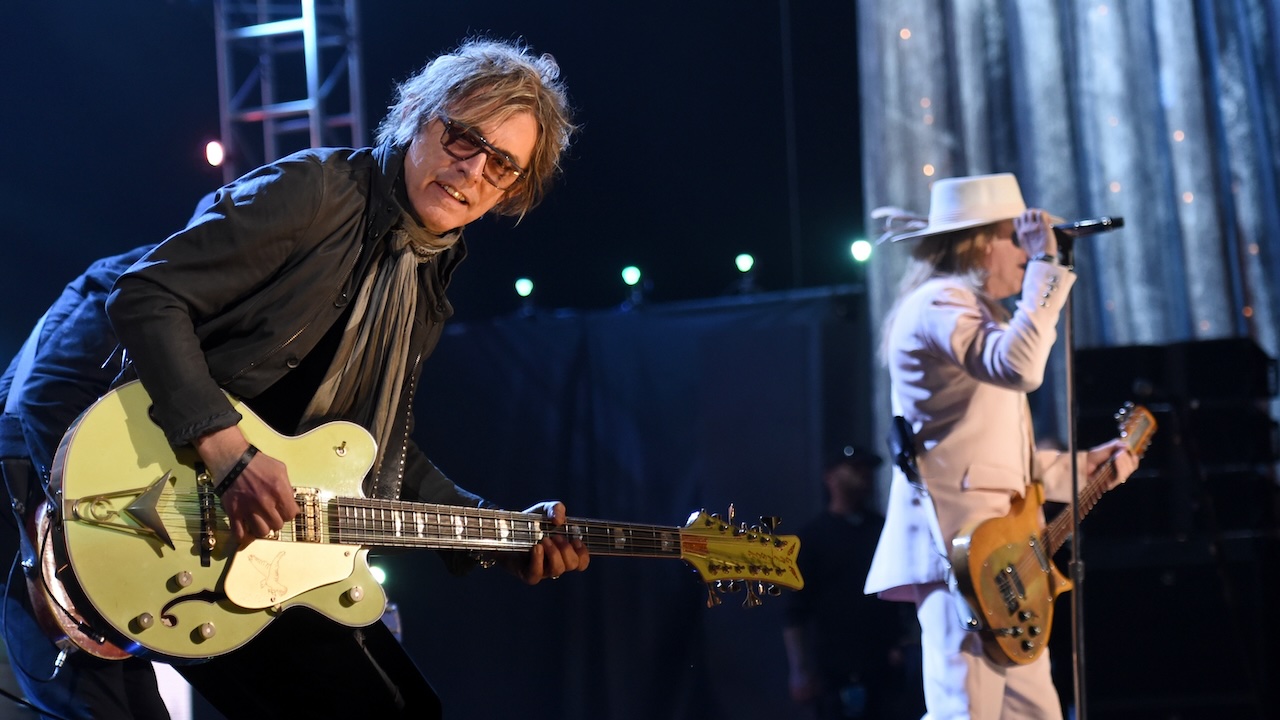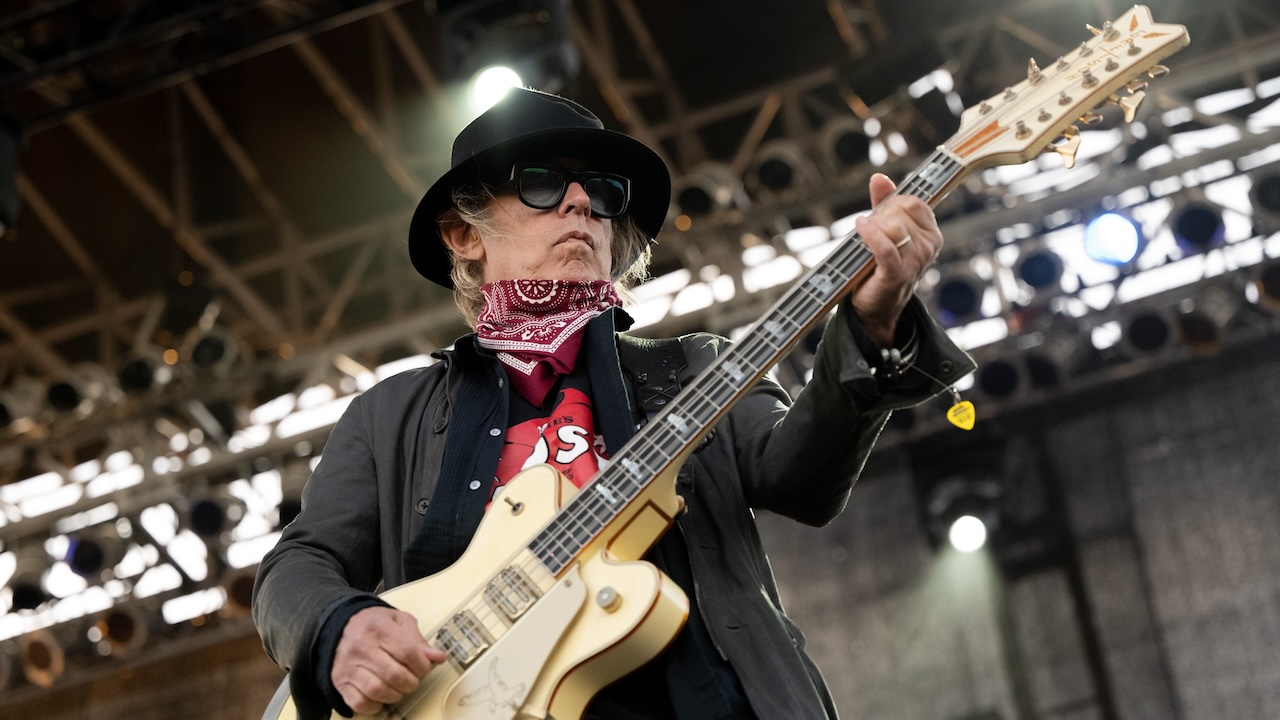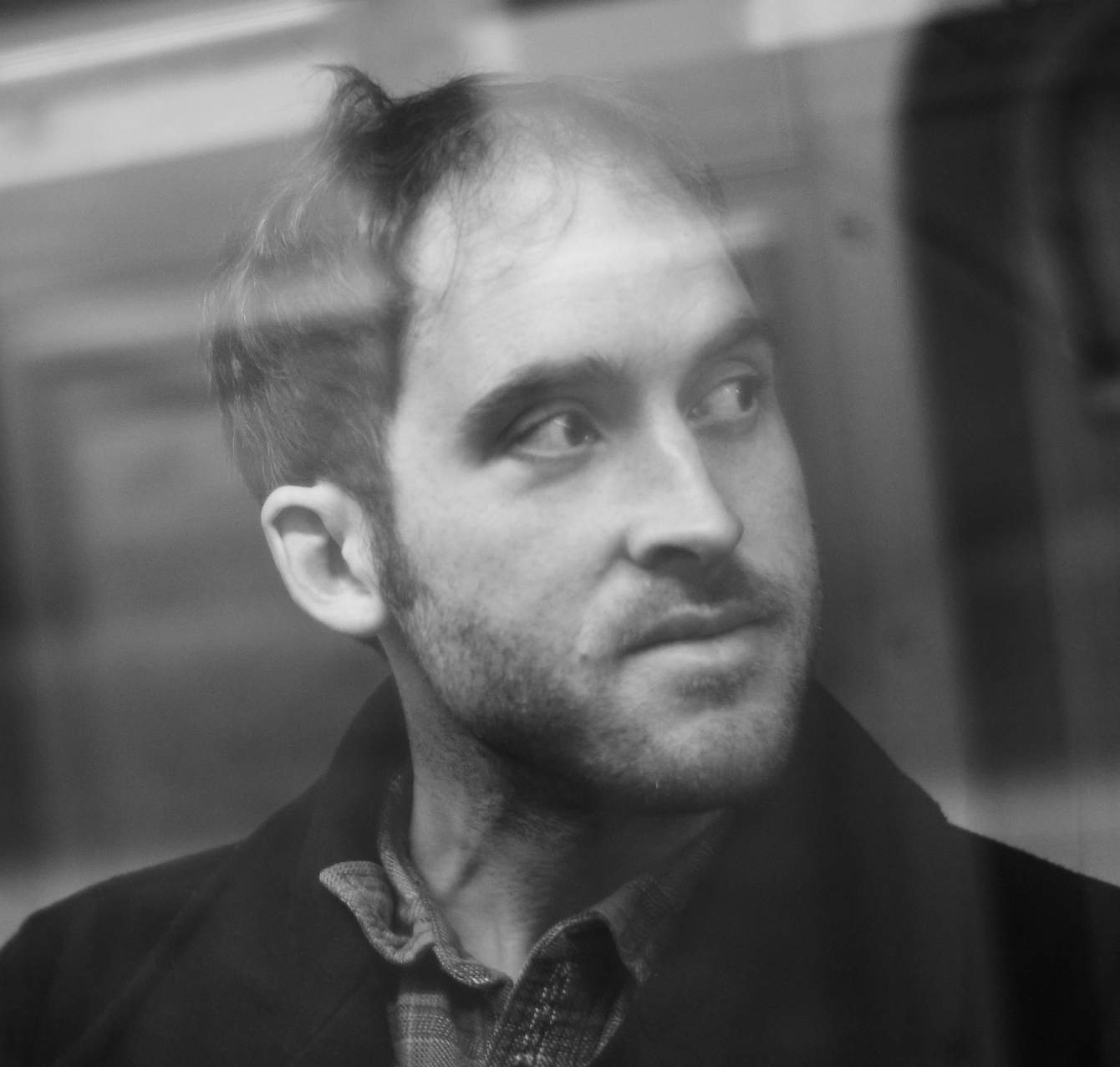“Producers and engineers were freaked out by the 12-string. They said, ‘No, that sounds like crap – go back to the Precision direct’”: Cheap Trick’s Tom Petersson on how he pioneered the 12-string bass and influenced a generation of players
Having invented the massive 12-string bass sound back in 1978, Cheap Trick’s Tom Petersson earned his place as one of the most innovative bassists in rock ’n’ roll

If Cheap Trick’s Tom Petersson was ever taught the “traditional” way to approach bass guitar, it didn't take. As a founding member of Illinois's most celebrated rock outfit, he has long been a model for bassists interested in being different.
Audacious, visionary, and highly capable, Petersson dedicated himself to creating the unique sounds he heard in his head – sounds he wasn't able to fully realize until he invented the 12-string bass, a four-string with lighter-gauge octave strings running next to the standard strings.
Not a busy lead-bass player like the Who's John Entwistle or Yes's Chris Squire, Petersson explored a sonic space somewhere between their note-y twang and the raw energy of punk and hard-rock deviators like the Stranglers’ JJ Burnel and Motorhead's Lemmy Kilmister, yielding a pronounced punch that inspired later 12-string devotees such as dUg Pinnick of King's X and Jeff Ament of Pearl Jam.
Created in 1978, the first 12-string – a short-scale bass with a single truss rod – was a singular and unique creation. Referred to as the “Quad” model (for quadraphonic), it housed innovative active electronics and brought together the dream team of Jol Dantzig, Technical Director of Hamer Guitars, and fellow innovators Seymour Duncan and Rex Bogue.
“A project has to answer a question, or propose a solution,” explained Dantzig. “The 12-string bass isn't just a gag – it truly answers a question and serves a need. It filled out Cheap Trick and put a unique stamp on the sound.”
Following the Hamer period, Petersson met with luthier Paul Chandler and began a collaboration that led to the Chandler Royale 12-string. “We wanted to give it more twang and more of a guitar-type response,” explained Chandler. “That meant increasing the string tension by adjusting the neck angle and putting graphite stringers in the neck, which evened out the response.”

After teaming up with Waterstone Instruments founder Bob Singer in 2004, Petersson began designing his first true semi-hollowbody 12-string bass. “We changed the routing pattern to keep the semi-hollow wings, but we made sure that we had enough solid center construction to support the bridge and the tailpiece,” explained Singer.
All the latest guitar news, interviews, lessons, reviews, deals and more, direct to your inbox!
Petersson later went on the road with a Gretsch Signature Model, delivering the monstrous tone through his Reeves amp rigs. “It's a huge sound,” Cheap Trick guitar tech Dave Rule told Bass Player. "Every day when I check it, the sound is just enormous.”
“It's like having a 12-string guitar playing along with the bass,” added drummer Bun E. Carlos. “Tom's like a rhythm player and a bass player. That frees up a lot of sonic real estate.”
We spoke to Petersson back in 2006, following the release of Cheap Trick’s 15th studio album, Rockford – a hybrid of arena rock, ‘60s nostalgia, and blistering power pop.
Do you think of yourself as a technician, or more of an intuitive player?
“I totally approach it from feel. Creativity is all-important. You can fix the technical aspects of your bass playing, but if it's not creative, or interesting, there's nothing you can do about that, no matter how technically perfect it is.”
How did the idea for the 12-string bass originally come to you?
“Before Cheap Trick, Bun E., Rick, and I were working in a band with a lead singer named ‘Stewkey’ Antoni. I thought it would great to get a big, orchestrated sound. We had just one guitar, drums, and bass guitar, but we wanted to sound huge and heavy.
“I had one of those old Fender 12-string electric guitars, and I thought I'd play it through an octave divider to get the low-end. But the octave divider didn't track well unless you played really slowly. The idea with the 12-string was to make it sound like there were a couple of people playing.”
Did you ever have a hard time selling the idea to anyone you worked with?
“Producers and engineers were freaked out by the 12-string. They said, ‘No, that sounds like crap – go back to the Precision direct.’”

“By Heaven Tonight in 1978, we had gained more control of recording. When we recorded At Budokan, nobody got in the way of our sound. That was just us. It was live, so there wasn't anything anyone could do about it.”
How did you design your first 12-string?
“Paul Hamer and Jol Dantzig had a guitar shop in Chicago, and when they decided to start a guitar company, I tried to convince them to build a long-scale 12-string bass. They thought the neck wouldn't be able to handle all that tension, so in 1977, they made me a 10-string as a compromise. I never recorded with it, but I did use it on the road. It worked fine, so we moved up to 12-string.
“I wanted that piano sound you get from the long-scale basses, but I couldn't dissuade them from making short-scale basses. I wanted it to sound like a Gibson Thunderbird with two guitar players playing along. Around 1985, I finally got the ‘Acoustic’ long-scale 12-string from Hamer. I still have it, and it's great.”
How are four- and 12-string basses different, from a playing perspective?
“The 12-string is harder to play. I always use a pick, and sometimes I'm more riff-oriented with the 12. For writing, the 12-string is more like an orchestra with overtones and drones. It's almost like a cello.”
Is there a sweet spot on a 12-string's neck?
“No. It has to all be even or I get another bass. It's not like a Hofner where you have to learn the instrument's intonation – where you can't play in certain places up high on the neck. I want my instruments to be consistent.”
What is the best musical context for a 12-string?
“Sparse songs. This kind of bass is most useful when you have space for it. If there are a lot of overdubs on a track, the 12-string gets lost. You get a truer bass response with a four-string, but subtlety is everything in the studio; live, there isn't that subtlety, so I'll always play a 12-string.”
Do you use alternate tunings?
“Not many; sometimes I'll tune a step or half-step down. I tune the E strings down to D on Don't Be Cruel.”
In tuning your 12-strings, do you detune one of the octave strings slightly to put them out of phase with each other?
“I do in the studio. You don't have to go out of your way to make it sound out of tune, but yeah, if I am recording I put one slightly sharper than the other.”
Do you do much chord work on your bass?
“No, it kind of gets in the way. With guitar, there's no real need for it.”
Have you found the tone you want, or are you still looking?
“I always wish I could get ‘that tone’. It can be a headache – it's rarely ever right to my ear. But sometimes it works and I think, ‘Wow, that sounds good.’”

Nick Wells was the Editor of Bass Guitar magazine from 2009 to 2011, before making strides into the world of Artist Relations with Sheldon Dingwall and Dingwall Guitars. He's also the producer of bass-centric documentaries, Walking the Changes and Beneath the Bassline, as well as Production Manager and Artist Liaison for ScottsBassLessons. In his free time, you'll find him jumping around his bedroom to Kool & The Gang while hammering the life out of his P-Bass.

